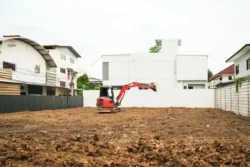Has Australia’s office market recovered from COVID-19?
Published
March 29, 2022
Published
March 29, 2022

When the pandemic first hit our shores, cities became ghost towns. Buildings were hollowed out, white collar workers turned kitchens and dining tables into workspaces, and there were harrowing predictions as to the future of office culture. Thankfully, two years later, we’re seeing glimpses of a return to normality. Or at least a new normality.
From where we stand, there are too many arguments for office space relevance to be concerned the asset class will be defunct in the future. A centralised environment is crucial for a business to bolster team culture and to drive development for new and younger staff. Tenants know it. Employees know it. Landlords know it.
That said, how is the office market recovering from the pandemic? Using Heron Todd White’s stats from their March 2022 Month In Review, let’s find out.
Vacancy rates

The Property Council of Australia (PCA) said in January 2022 the country’s total office vacancy rate was at 12.1 per cent. That’s a sizeable increase since pre-pandemic days, when the national vacancy rate stood at 8.4 per cent as of January 2020.
But not every city has seen an occupancy decrease since the pandemic begun.
Adelaide has seen their core office vacancy rate drop two per cent in the 12 months to January 2022 to 15.5 per cent. Perth recently recorded its lowest office vacancy rate since January 2015, its CBD total vacancy rate dropping from 16.8 per cent to 15 per cent in the six months to January 2022. Its total vacancy fell a full per cent to 18 per cent for the same period.
HTW expects a slow return to office premises over 2022, noting market confidence is the major hurdle for tenants. There are signs a resurgence is already underway, with some owner-occupiers purchasing smaller, strata offices.
Rents and incentives
HTW says some capital cities are still reporting up to 40 per cent incentives to attract tenants.
It appears a flight to quality is already underway in some precincts and will continue throughout the year, as some tenants look to upgrade their premises while the market is flat. Tenants are needing to create a safe COVID environment to entice workers back to desks, so improved space ratios will be a big factor in future leasing deals.
Working from home arrangements
In a recent report from Deloitte on the workplace transformation in the digital era, surveying approx. 1,000 white collar employees, around 9 per cent of employees are stuck with inflexible work arrangements these days. That’s a tiny number, with the bulk of workers in a post-pandemic, digitalised working world able to perform their role with some sort of flexibility in or out of the office.
Hybrid working arrangements are growing in popularity, as more workers set up shop in their home while keeping a desk at the office. Beyond the cost savings of having every worker in their premises at once, businesses can use their spaces more efficiently, altering layouts and existing designs to enhance the workplace experience.
Growth in office employment

Most expect a significant recruitment drive will take place in the office market in the not-so-distant future. Australia needs a good supply of office space to cater to a growing workforce. The effect of higher worker demand is likely a boost in property values and a reduction in vacancy rates. This scenario mightn’t be too far away, as businesses rebound for the pandemic era of mandates, lockdowns, and capacity restrictions.
The road to recovery is – and will continue to be – a slow burn for the office market. Some precincts are faring better than others. Queensland, WA, and South Australia are seemingly in a phase of steady recovery, and these are the states who felt the softest brunt of the coronavirus. It makes sense their east coast counterparts will follow suit, as 2022 invites fewer restrictions and a much-anticipated return to normality.
Australia’s office market has not quite recovered from COVID-19, nor will it likely be virus-free by the end of the year. But the signs are there for slow and steady improvement. It’s a good thing property investors are a patient bunch.
Beat the crowd to our next investment
Our next property investment opportunity isn’t far away. Want exclusive access to the Information Memorandum (IM) and the chance to invest first? Then subscribe for investment updates. We’ll keep you in the loop a week or so ahead of the investment launch, giving you the opportunity to invest before the investment is offered publicly.






